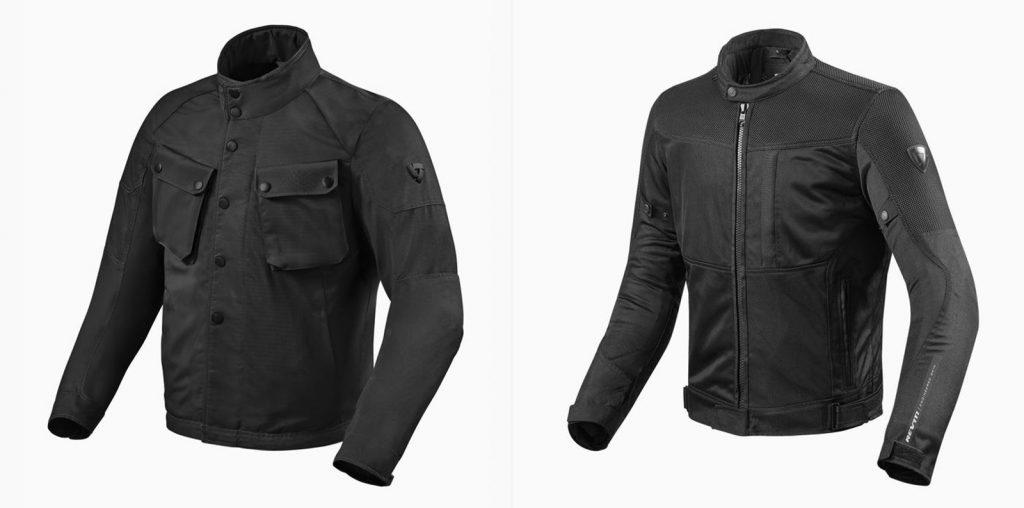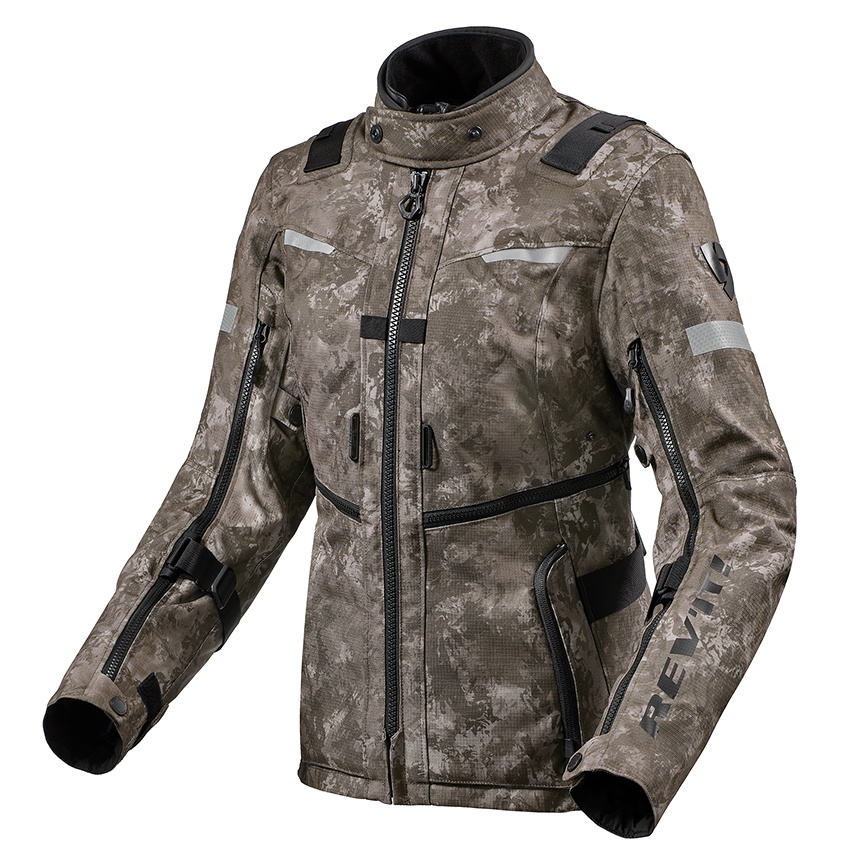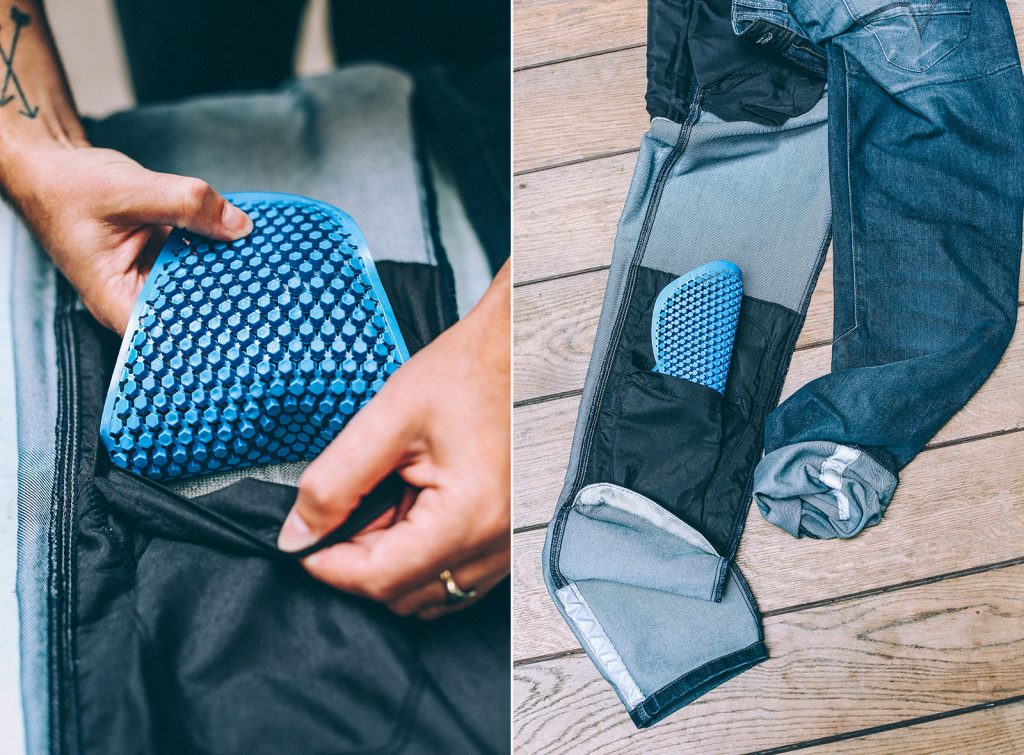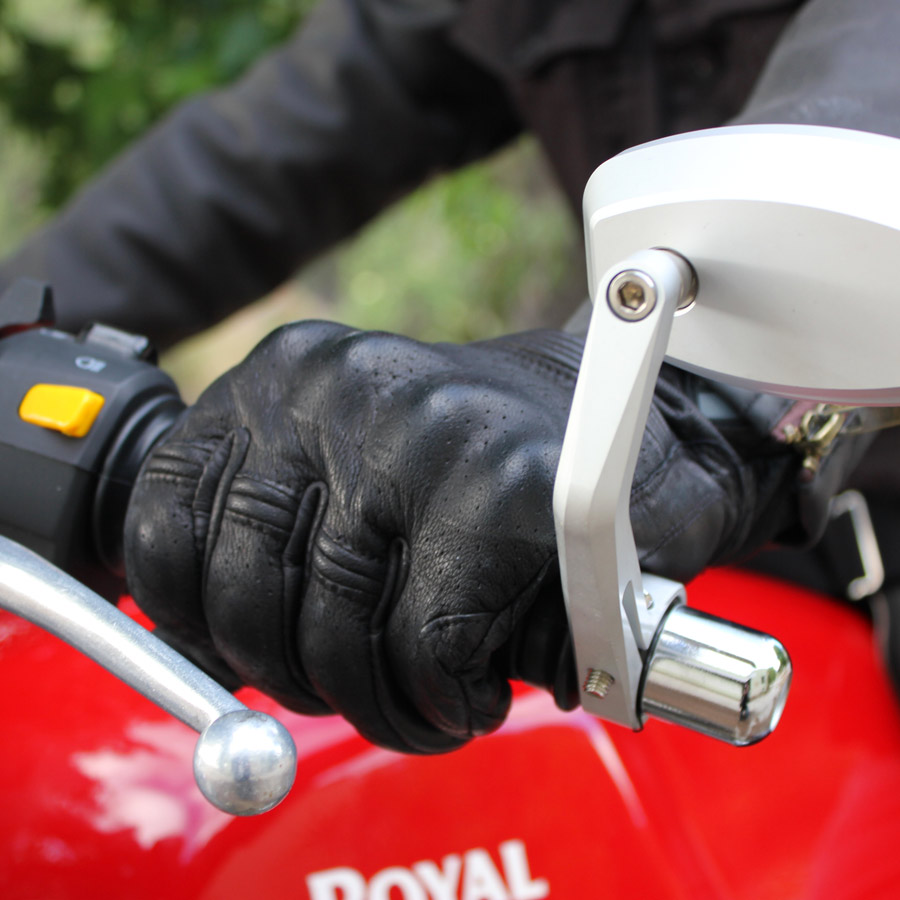REV’IT Humanizes Technical Motorcycle Apparel
The Dutch brand’s various trademark styles also signpost technical innovation

Motorcycle apparel—which has to be protective, breathable and move with a rider—isn’t just demanding to design, it’s also difficult to make look appealing. With all the tech needed to protect from sun, rain, wind, debris and the road itself, much of the gear looks almost absurd when riders step three feet from the motorcycle. Not to mention, styles borrowed from the military can send all the wrong messages. REV’IT—a Dutch brand that has stood apart from decades of cartoonish cues in motorbike apparel—provides all the protection a rider needs, while still advancing technology and utility with its latest collections. The design team achieves this by building on an intrinsically utilitarian approach.

The brand’s Senior Apparel Product Designer, Rod Macintyre, says REV’IT’s core thinking can be understood simply by studying a pocket on the Bowery Jacket versus the Vigor Jacket (above, respectively). “First, if you take something like a technical mountaineering jacket, it has big, oversized pockets for utility,” he says. But there’s also the “optics” of these pockets: can you tell the pocket size from its shape? Does the shape signal its use? Does that seem inspired by other sports or workwear—further indicating its purpose?
Macintyre explains that there are customer silos within REV’IT (similar to those categories you’d “find at adidas or Arc’Teryx,” he says) and he believes we fall into these segments quickly, just by comparing the pockets of jackets we’re interested in purchasing. The rider who wants a sportier, more tailored item will buy the Vigor, while those who gravitate to workwear styles will find the Bowery more appealing—and that might come down to the two different pocket designs. “One has more of a heritage flavor and indicates its volume visually,” Macintyre says. “The other hides that capacity and signals stealth.”
Of course, materials matter too. Vigor’s textured panels and Bowery’s softer, more natural appearance also speak to archetypes, which Macintyre says are always top of mind among his design team. “Technical versus natural tells you something foundational about the target customer group,” he says. But the equation is complex and very frequently means blending opposing values to create the perfect balance.

That complicated design process resulted in the new Component H20 Jacket from the brand’s Dirt Series—a collection that came about because the adventure riding category is exploding, especially among younger riders. Adventure riders take their bikes on multi-day journeys for camping or even as a stepping-off point to access a mountaineering route. These kinds of journeys often need the armoring of motocross clothing, which tends to be too garish for some riders, who instead end up wearing other types of clothing. Macintyre says they found that many individuals were wearing “ski jackets, snowboard jackets, mountaineering jackets, and even gloves, base layers and mid layers to try and solve the problem.” But low-speed crashes are pretty common for this kind of riding, and most of that apparel isn’t built to withstand that sort of fall. With that rider in mind, the design team studied the movement patterns of motocross and borrowed heavily from the worlds of mountain biking and snowboarding, ultimately merging the two with “the kind of bulletproof fabrics REV’IT’s known for.”

Regarding the color choices, Macintyre says many adventure riders are frequently traveling worldwide, where loud, gaudy, logo-heavy gear isn’t always appropriate. “Our clothing is designed to be respectful, both of the landscape and other cultures,” he says. “That’s really why we went the other direction; toward earthy colors, in a more modern and mature way, which is coming from worlds outside motorcycling.”
 This helps explain how the REVI’IT team developed the camouflage theme for the new Sand series of clothing. While the team decided to use camo, they also wanted to avoid an aggressive, military style. Macintyre says, “It can be done in a sophisticated way or it could become very basic and obnoxious.”
This helps explain how the REVI’IT team developed the camouflage theme for the new Sand series of clothing. While the team decided to use camo, they also wanted to avoid an aggressive, military style. Macintyre says, “It can be done in a sophisticated way or it could become very basic and obnoxious.”
In fact, the brand came across their version of camouflage by happenstance; after a ride in a sand quarry. “We came up from the ride and the mud dried on our pants and we were like, ‘Man, that looks nice!’” Macintyre explains. “It was a pattern coming as a result of an experience—like the sweat stains on a T-shirt after a long run or a hard cycle. It looks like victory.”

The team replicated the pattern using tiny hexagons—a core pattern REV’IT scales down or enlarges based on which target rider they’re trying to communicate with, much like their shield logo shrinks or enlarges depending on whether they’re building a sportier or more urban piece. Rather than reading immediately as camouflage, the team wanted the pattern to look like the mud patterns they had encountered. They also thought about the print in relation to the blur of a rider zooming through the woods; where a photo would show the form as a streak. “So from a distance it doesn’t show as camo, but really more as a texture,” Macintyre says.

Yet another way REV’IT communicates with customers is through their ribbed fabrics. If you’re looking at the Bastille Gloves or the Traction Jacket (or most of the brand’s boots or sneakers), you’ll see these flex points. Leather for motorcycle racing suits is typically stretched and then allowed to relax, and that creates an accordion flex point that retains the tough, abrasion resistance that protects riders. REV’IT (which has its own fabric lab) uses this classic technique, but also deploys the same effect with modern, synthetic materials because customers read their ribbed accents as a sign of utility, but also style.

The brand’s denim is also a melding of opposite attributes—visually simple but intrinsically complex. To that end, rather than making “distressed” denim that’s damaged during production (making it dangerous to wear as protection on a motorcycle), the brand uses lasers to create the effect and then incorporates hidden double-layered knees and seat, reinforced seams, internal pockets for hip- and knee-protectors and, at times, Cordura and other synthetics that increase protection from abrasion.
“What everyone loves about denim is a lot like leather,” Macintyre says. “It ages and forms to you, and becomes bespoke over time. That’s really a lot of what we want REV’IT to be, maker of honest, timeless materials that grow more beautiful with age.”
Images courtesy of REV’IT












